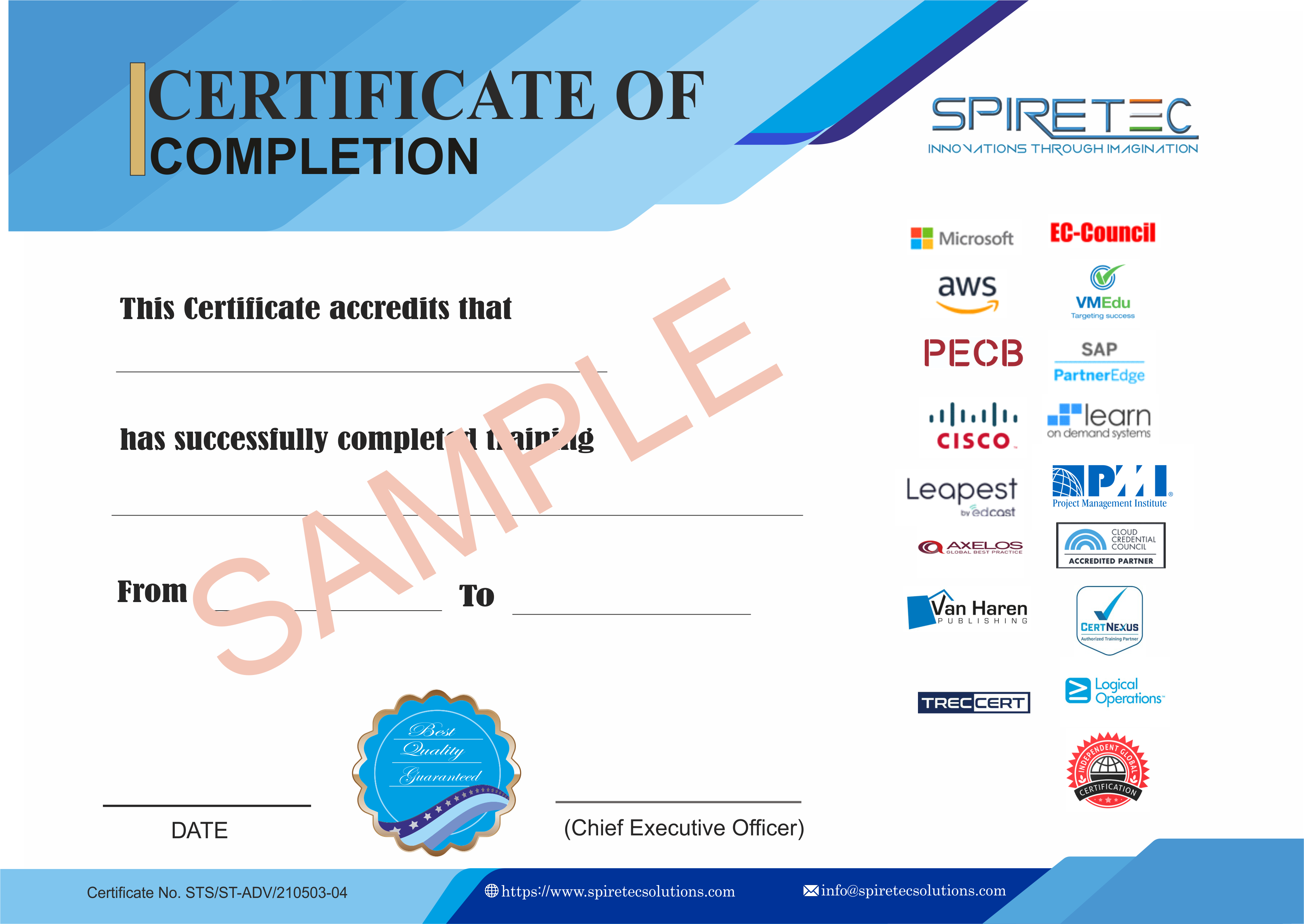The Scrum Master Certified course is a comprehensive training program designed to equip learners with a deep understanding of Scrum principles, practices, and roles. It is ideal for individuals seeking to become effective Scrum Masters or to enhance their agile project management skills. The course provides an Agile and Scrum Overview, clarifying the Agile Manifesto, principles, methods, and the distinct advantages of Scrum over traditional project management methodologies. Learners will delve into Scrum Roles, understanding the responsibilities of core roles such as the Product Owner, Scrum Master, and Scrum Team, as well as non-core roles. The course covers the Scrum Project Phases, including Initiate, Plan and Estimate, Implement, Review and Retrospect, and Release, along with the relevant inputs, tools, and outputs for each process. Additionally, the course addresses Scaling Scrum for larger projects through techniques like the Scrum of Scrums and provides strategies for maintaining stakeholder involvement and ensuring executive support. By understanding these key aspects, learners are empowered to implement and manage Scrum effectively, leading to increased efficiency and success in their projects.
Audience Profile
This certification is appropriate for anyone who is interested in becoming a Scrum Master.
Prerequisites
There is no formal prerequisite for this certification. However, it is preferable to complete the Scrum Developer Certified (SDC®) certification before applying for the Scrum Master certification. It is also highly recommended to attend a 2-day SMC® classroom training
Exam Format
Course Outline:
I. General Knowledge
A. Agile Manifesto
The Agile Manifesto consists of four key values:
-
Individuals and interactions over processes and tools.
-
Working software over comprehensive documentation.
-
Customer collaboration over contract negotiation.
-
Responding to change over following a plan.
B. Scrum Foundations
-
Empirical and Defined Processes
-
Empirical Process Control is based on observation and evidence, relying on feedback loops. Scrum is an empirical process with three key pillars: inspect, adapt, and transparency. These help ensure progress through continual adjustment based on real-time information.
-
Defined Processes are based on predictable steps and best practices, often used in repeatable environments where variation is minimal.
-
Sprint
-
Iterative and Incremental: Scrum follows an iterative-incremental approach where each Sprint builds on the previous one. This helps refine the product with each iteration, delivering functional increments quickly and efficiently.
-
Protected: The Sprint is shielded from changes or interruptions. The team focuses solely on achieving Sprint goals.
-
Timeboxed: A Sprint is limited to a fixed timeframe (usually 2-4 weeks). Timeboxing prevents scope creep and encourages efficiency.
-
The Significance of “Done”
-
The Five Scrum Values
-
Commitment, Courage, Focus, Openness, and Respect: Scrum practices align with these values to foster teamwork and a high-performance culture.
-
Applicability of Scrum
-
Scrum is well-suited for complex, adaptive problems such as software development, research, and innovation-driven projects.
II. Scrum Roles
A. Overview of Scrum Roles
The three Scrum roles are:
-
Product Owner: Manages the product backlog and defines priorities.
-
ScrumMaster: Ensures the team adheres to Scrum principles.
-
Development Team: Self-organizes to deliver increments of functionality.
B. ScrumMaster
-
Responsibilities:
-
Implements and teaches Scrum, ensures adherence to Scrum values, and removes impediments.
-
Acts as a change agent by advocating Scrum practices across the organization.
-
Facilitates team collaboration and shields the team from interruptions during Sprints.
-
Coaches the team in Agile methodologies and productivity improvements.
-
Authority:
C. Product Owner
-
Responsibilities:
-
Maintains the Product Backlog and drives product success by aligning the team with business goals and user needs.
-
Collaborates with stakeholders and the team to refine backlog items and prioritize work.
-
Authority:
D. The Team
-
Responsibilities:
-
The team is self-organizing, accountable for delivering increments, and manages its Sprint backlog.
-
Participates in Sprint Planning, Daily Scrums, and Retrospectives.
-
Authority:
III. Scrum Meetings
A. Sprint Planning Meeting
-
Objective: Define Sprint goals and the work needed to achieve them.
-
Duration: Typically timeboxed to 4 hours for a 2-week Sprint.
-
Participants: ScrumMaster, Product Owner, and Development Team.
B. Daily Scrum Meeting
C. Sprint Review Meeting
D. Sprint Retrospective Meeting
E. Release Planning Meeting
IV. Scrum Aritifacts
A. Product Backlog
-
Definition: An ordered list of user needs and other product requirements.
-
Contents: Backlog items include functional and non-functional requirements, risks, and technical work.
-
Management: Continuously refined through collaboration between the Product Owner and the Scrum Team.
B. Product Increment and Definition of Done
C. Sprint Backlog











 Live Online Training (Duration : 16 Hours)
Live Online Training (Duration : 16 Hours)
